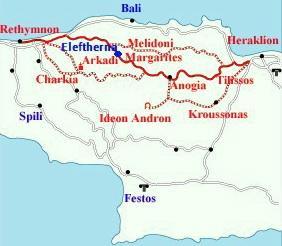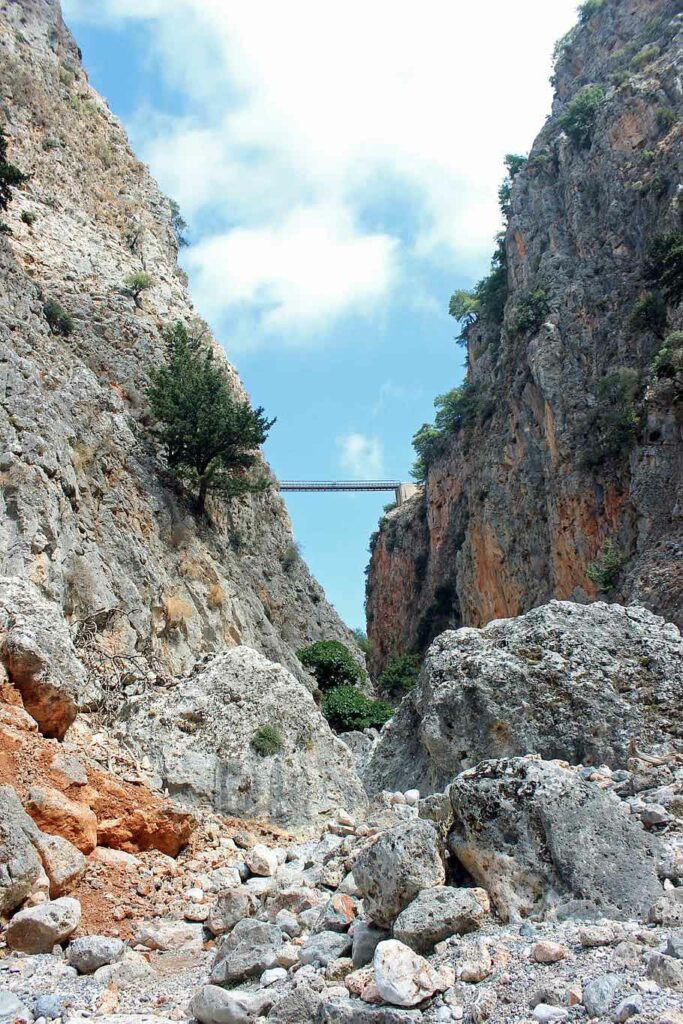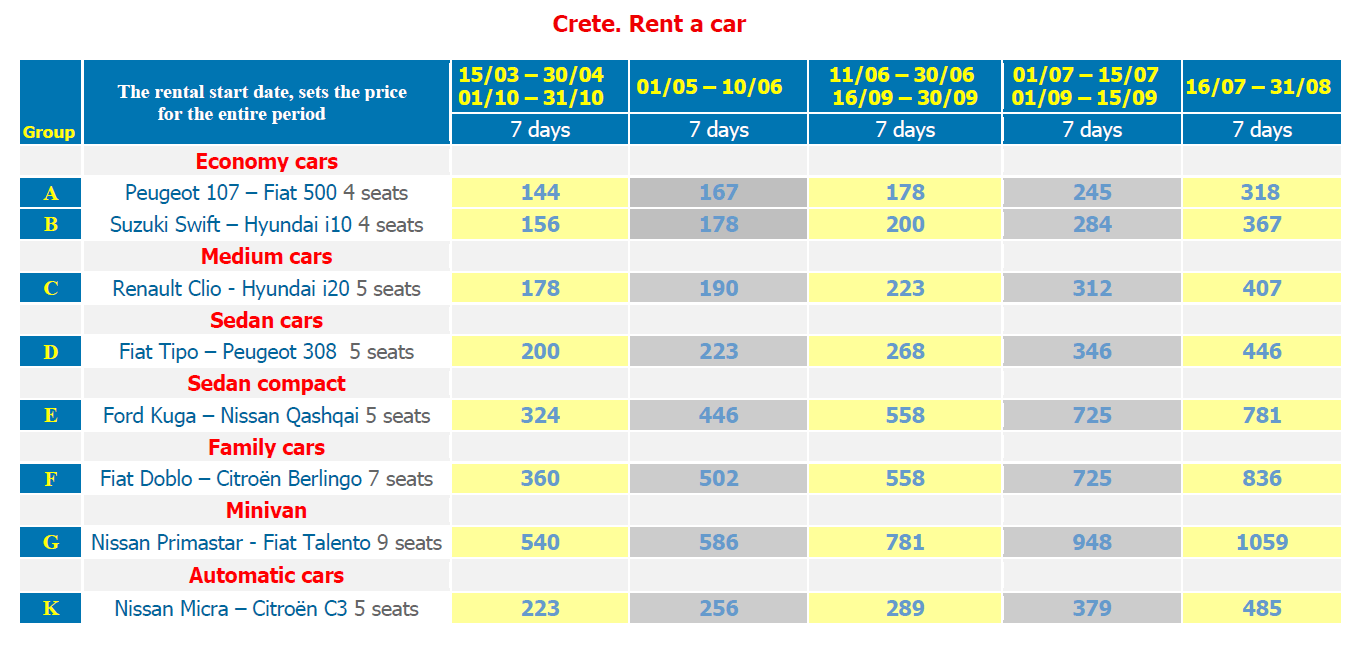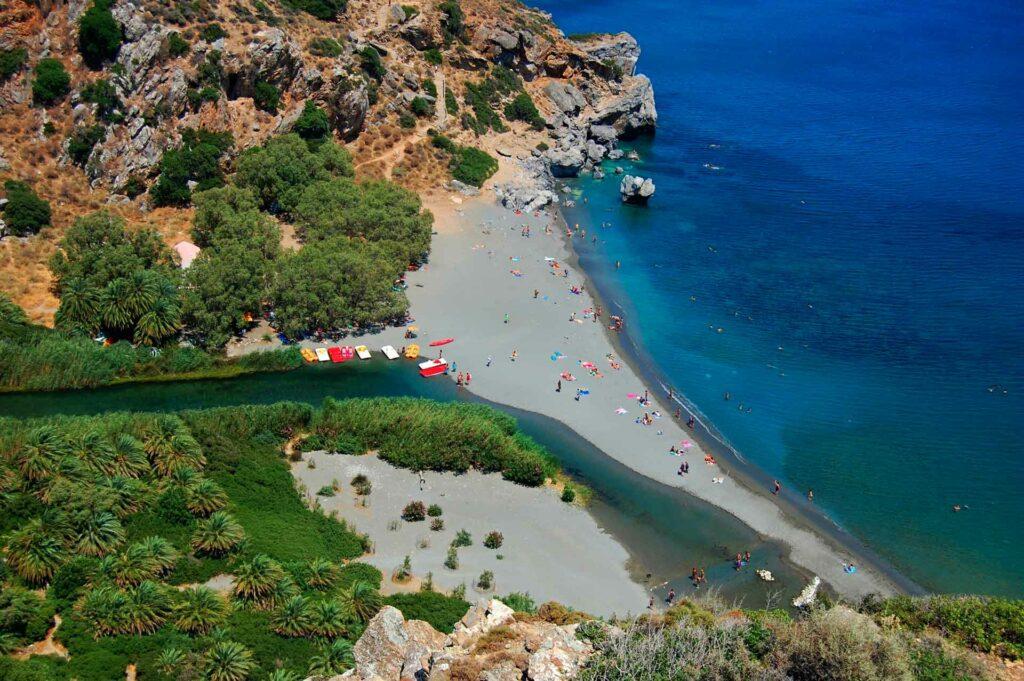Home » BLOG » Visit Crete » Arkadi, Anogia

Tour starting from Rethymnon:
Arkadi - Eleftherna - Margarites - Melidoni - Anogia
Arkadi
It is a typical example of the monastic architecture of the last years of Venetian rule, masterfully combining Gothic and Renaissance elements, the façade adorned with an elegant bell tower, built at the end of the 16th century in honey-coloured local stone.

Thanks to its vast agricultural territories, the monastery prospered and was known as a great centre for copying manuscripts.

Today, a handful of monks look after the gardens and the museum. Since the 1866 revolution against the Ottomans, and its destruction, the Arκadi monastery has become a symbol of the struggle for freedom.
Eleftherna
Eleftherna, an ancient Cretan city, 25 km from Rethymnon, was founded by the Dorians in the 9th century BC. On the site, a necropolis from the Geometric and Archaic periods has been unearthed (see our page " History of Crete "). In 2010, a 2,700-year-old double tomb was discovered, which concealed more than 3,000 gold leaves and the first representation of the bee as a goddess.

The city continued to develop and baths, villas and public buildings were rebuilt. Occupied by the Romans, the city's prosperity was threatened by an earthquake in 365.

During the Byzantine period, the city became the seat of a bishopric, which led to the construction of a basilica in the mid-7th century. Arab raids in the 8th century and another earthquake in 796 finally led to the decline of the city.
On the site, a modern museum of 1,700 m² has been built, which resembles an arch, housing the history of this powerful and important city of ancient Crete.
One of the celebrities of this archaeological site is the "Lady of Auxerre", a 75cm high Cretan statuette, dated to around 640 BC. It landed 26 centuries later in the town of Auxerre, where it was acquired in 1895 by the caretaker of the town's theatre! A few years later it was transferred to the Louvre, and since then it has been assigned to the Department of Greek, Etruscan and Roman Antiquities.
It is a statuette of the dedalic style, which appeared after the geometric style and before the classical. A twin sister will soon be exhibited at the Cretan site museum of Eleftherna.
Margarites

A village of potters, it has a long tradition in this field. It has been a culturally flourishing area for centuries, since the beginning of Venetian rule, and this is still reflected in its architecture today.
During your visit, you will be enchanted by the countless decorative ceramics on the walls and in the courtyards, pots, jars and ceramic vessels of all kinds and sizes. The alleys are picturesque, so that every corner of the area is like a frame cut out of a painting.
Melidoni
The Melidoni cave, with its impressive stalagmites and stalactites. This cave is of great archaeological and historical interest.
Anogia
A town of almost 3,000 inhabitants, located in the prefecture of Rethymnon, at an altitude of about 750 metres on the slopes of Mount Psiloritis.

Anogia has become one of the most touristic destinations in the region, offering its visitors a hospitable environment, elements of the Cretan tradition and, of course, cultural entertainment. Originally a shepherds' country, it appeared during the Byzantine period and then during the Ottoman occupation, and is known for its resistance, which is why the village was razed and burned twice in the 19th century.
In 1944, towards the end of the Second World War, Anogia became famous for the kidnapping, by the British and Cretan resistance fighters, of the German Major General Heinrich Kreipe, and his exfiltration to North Africa. This romantic adventure was made into a film under the title I’ll met by moonlight. In retaliation, General Friedrich-Wilhelm Müller, known for other massacres in Crete, decided to turn Anogia into a pile of rubble, the third destruction in its history. Twenty-five of its inhabitants, including women, the elderly and the disabled, who refused to leave were summarily shot. In 1947, he was captured by the Red Army in East Prussia, tried and sentenced to death by a court in Athens as a war criminal.

Today, Anogia has managed to preserve its customs, traditions, language idiom with elements of ancient Greek unchanged over time. The village is also known for its cultural events, dances, songs and music. The famous singer Nikos Xylouris, considered the voice and soul of Crete, and not only, is from here. Finally, Anogia is one of the largest centres of folk art and creative crafts in Crete. The village attracts many visitors, who come to buy woven or embroidered fabrics. A special attraction of Anogia is the museum of folk art. Today, weaving is the main activity of many families. There are several shops in the village where one can observe the weaving process. (for bus service, see KTEL)
Rent a car in Greece: Crete (Heraklion, Chania, Rethymnon, Agios Nikolaos) – Athens – Rhodes – Corfu – Mykonos – Santorini – Thessaloniki – Preveza/Aktion/Lefkada – Patras/Araxos – Kalamata – Paros – Syros – Kos – Naxos – Lesbos – Thassos – Zakynthos/Zante






